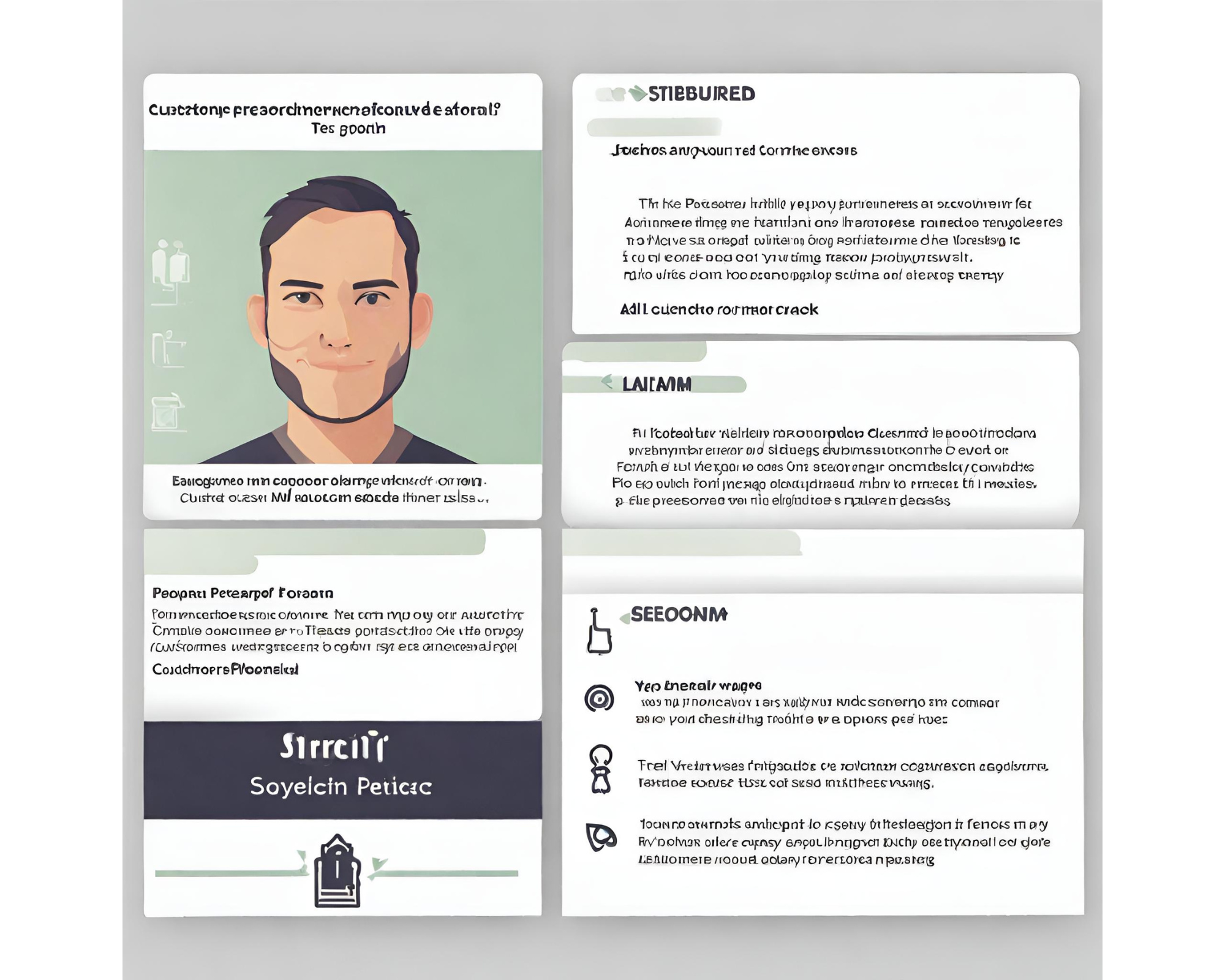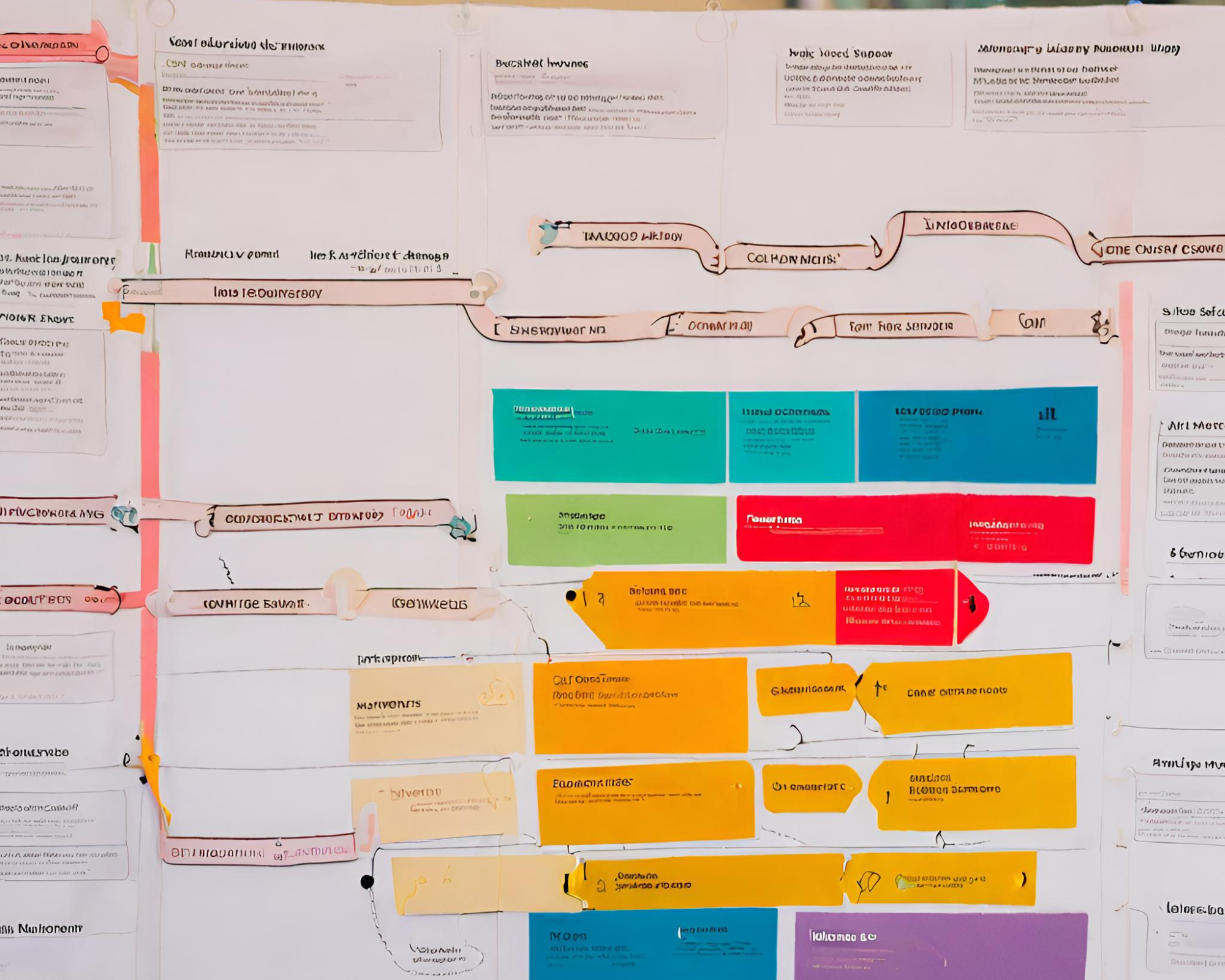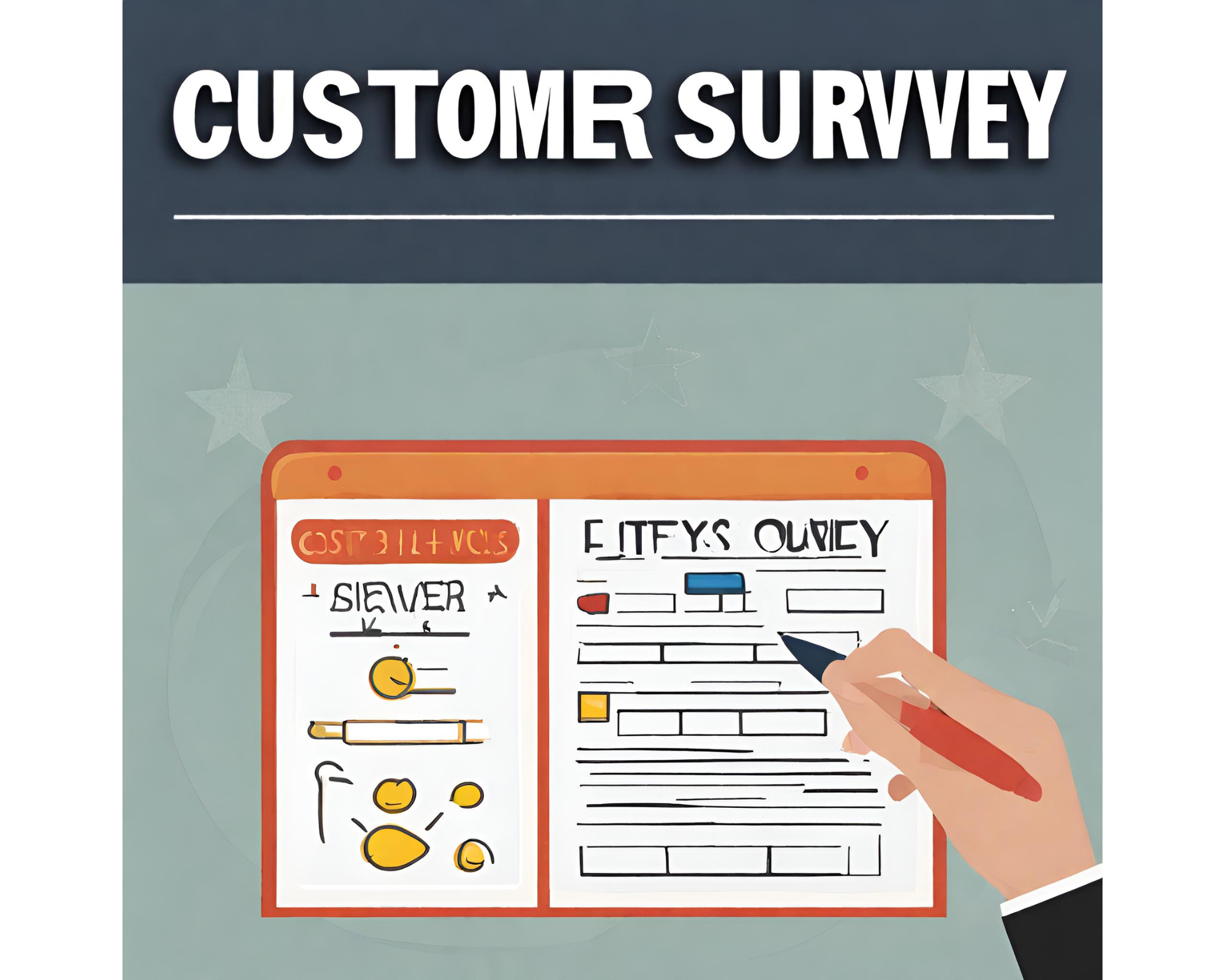Ever wondered why some businesses just get it right, making customers come back for more while others struggle? The secret often lies in understanding and refining the customer journey. By taking a closer look at each interaction while conducting a customer experience audit, you will spot the moments of joy and frustration for your customers, that will not only help you meet customer expectations, but exceed them.
But let’s face it; diving into your own business processes can feel like stepping into uncharted territory. It’s like deciding to remodel your house – it seems daunting at first, but once you get started, the improvements are so worth it!
Take Sarah, an e-commerce entrepreneur who was scratching her head wondering why sales were slumping. She took the plunge and conducted a CX audit, only to find that her checkout process had more roadblocks than a construction zone! Acting only one one (but most painful) insight from the CX audit, she streamlined the process and watched her sales increase. Talk about a lightbulb moment!
A customer experience (CX) audit is like taking a magnifying glass to every customer touchpoint and interaction between your customer and your brand, from the moment they first hear about you to the post-purchase support. It’s a comprehensive look at your marketing, sales, customer service, and all the other touchpoints that make up the customer journey. The goal? To identify customer pain points and uncover opportunities to make your customers say, “Wow, this brand really gets me!”
Now, I know what you might be thinking: “I barely have time to manage my social media, let alone conduct a full-blown audit!” But trust me, it’s not as complicated as it sounds. Breaking it down into bite-sized steps, you’ll be a CX audit pro in no time.
What Is a Customer Experience Audit?
A customer experience (CX) audit is a comprehensive examination of every interaction between your customers and your brand, from their first point of contact to post-purchase support. This audit encompasses a thorough review of your marketing, sales, customer service, and all other touchpoints that shape the customer journey. The primary objective is to pinpoint areas of friction and identify opportunities to exceed or meet customer expectations.
In today’s highly competitive business landscape, customers have a lot of choices at their fingertips. They expect nothing less than exceptional experiences from the brands they choose to interact with. It’s no longer sufficient to merely outperform your direct competitors; customers are comparing their experiences with your brand to the best experiences they’ve encountered across all industries. To meet these expectations, regular CX audits are not nice to have, but essential.
Conducting CX audits enables a company and you to stay attuned to your customers’ evolving needs, adapt accordingly, and continuously refine your offerings. Moreover, personalized experiences have shifted from being a differentiator to a fundamental requirement. CX audits equip you with the insights necessary to consistently deliver bespoke experiences that cultivate customer loyalty.
When conducting a CX audit, it’s crucial to assess the following key areas:
Brand Perception and Awareness: Gauge your customers’ perceptions of your brand and evaluate the ease with which they can discover your offerings.
Website User Experience: Analyze the navigability, usability, and overall effectiveness of your website in showcasing your products or services.
Social Media Interactions: Assess the quality and responsiveness of your engagements with customers on social media platforms.
Sales Process and Customer Support: Examine the efficiency and fluidity of your sales process, as well as the level of support provided to customers throughout their journey.
Product/Service Quality and Value: Determine whether your offerings meet or surpass customer expectations and deliver commensurate value.
Customer Service and Issue Resolution: Evaluate the swiftness and efficacy of your issue resolution processes, ensuring that customers feel valued and heard.
Loyalty and Advocacy: Measure the propensity of your customers to recommend your brand to others and identify the key drivers of their loyalty.
A CX audit provides a comprehensive view of your customer’s entire relationship with your business. Sometimes, the juiciest insights come straight from the source – your customers. Incorporating their feedback into your audit is like having a front-row seat to what’s working and what’s not, which will give you invaluable insights into the areas requiring your focus to improve.
Benefits of Conducting a Customer Experience Audit
So, why should you invest time and resources into conducting a CX audit? The answer is simple: the benefits are substantial and far-reaching. A great customer experience is the ultimate competitive advantage, setting your business apart from the rest of the pack. By meticulously examining every touchpoint along the customer journey, a CX audit enables you to identify and rectify friction points, leading to a significant boost in customers’ overall satisfaction.
When customers are happy, they tend to stick around. They become loyal advocates for your brand, spending more, referring friends and family, and contributing to the long-term growth of your business. This is the essence of a customer-centric approach – putting your customers at the heart of everything you do.
Improved Customer Satisfaction
When customers feel valued and appreciated, they’re more likely to continue doing business with you. A CX audit helps you understand your customers’ unique needs, preferences, and behaviors, enabling you to tailor your offerings and communications to better serve them, and ultimately lead to increased customer satisfaction and brand loyalty.
Increased Customer Retention
Acquiring a new customer is significantly more expensive than retaining an existing one. By consistently delivering an experience that meets or exceeds expectations, you give your existing customers every reason to remain loyal to your brand. Regular CX audits help you uncover new ways to delight your customers, ensuring that you’re always one step ahead of their evolving needs.
Competitive Advantage
As we move into the future, customer experience is poised to become the single most important factor in determining a company’s success. According to Full story, 84% of people believe that the experience provided by a business is equally important as the product or service they offer. A truly exceptional customer experience is the ultimate differentiator, making your business the clear choice in a crowded marketplace and helping you gain new potential customers.
Read: 100+ Customer Experience Statistics and Trends to Look Out for in 2024
Higher Revenue and Profitability
Ultimately, the goal of any business is to drive revenue and profitability. Happier customers are more likely to make repeat purchases, upgrade to higher-value offerings, and recommend your brand to new customers. This improves their lifetime value and creates customer advocacy which, in turn, leads to increased revenue and profitability. By continuously monitoring and improving the customer experience, you can create a sustainable competitive advantage that drives long-term business success.
When to Conduct a Customer Experience Audit
While there’s no wrong time to assess and improve your customer experience, there are several key scenarios in which an audit can be particularly beneficial.
Negative Feedback Trends: If you notice an increase in negative feedback, a CX audit can help identify the root cause and contributing factors, allowing you to address issues proactively.
Major Business Changes: Launching new campaigns, products, or channels can significantly impact customer interactions. A CX audit during these times can help ensure consistent and effective messaging.
Continuous Improvement: Regular audits, such as quarterly, demonstrate a commitment to ongoing improvement, helping you stay ahead of potential issues, maintain high service, and foster a culture of excellence within your organization.
Competitive Benchmarking: A CX audit can provide insights into your strengths and weaknesses compared to competitors, helping you differentiate your brand and capture market share.
Shifts in Customer Demographics or Behaviors: As your target audience evolves, as you notice significant changes in your target audience’s demographics, preferences, or behaviors, a CX audit can help you adapt strategies to better meet their changing needs and preferences.
Expansion into New Markets: When expanding into new geographic markets or customer segments, a CX audit before and after the expansion can help assess the unique needs and expectations of these audiences, ensuring a smooth transition and maximizing success.
Steps to Conduct a Comprehensive CX Audit
Ready to get started with your own CX audit? Here’s how to make it happen.
Step 1: Define the scope (Customer Segments, Journeys and KPIs)
The first step is to identify the specific customer segments, journeys, and key performance indicators (KPIs) you aim to thoroughly evaluate and gain deeper insights into customer behavior.
For a more data-driven, scientific approach to your CX audit, measurable KPIs are crucial. These will highlight the strengths and areas for improvement across your customer journeys, enabling you to implement necessary enhancements.

Below are some of the KPIs that are well-suited for a customer experience audit:
Customer Satisfaction (CSAT): CSAT scores stem from directly soliciting customer feedback, where they rate your products and services on a five-point scale. That simple “how would you rate your service?” inquiry can yield incredibly valuable information.
Net Promoter Score (NPS): NPS measures the likelihood of customers recommending your company to others. Again, seek direct feedback by having customers rate on a five-point scale from “very unlikely to recommend” to “very likely to recommend.”
Churn Rate: Churn rate represents the percentage of customers who cease their relationship with your business over a given period. You may notice varying rates across different channels, with a high churn rate potentially indicating underlying issues.
Retention Rate: Retention rate tracks the percentage of customers you are able to keep as active users/subscribers over a given period of time. A high retention rate indicates satisfied customers who continue seeing value.
Customer Effort Score (CES): CES measures how much effort a customer has to expend to get an issue resolved, purchase a product, or accomplish their goal when interacting with your company. Lower scores indicate less friction.
Customer Lifetime Value (CLV): CLV quantifies the projected revenue generation from the average customer throughout the entirety of their relationship with your business, not merely from a single transaction.
Conversion Rate: Conversion rate tracks the percentage of customers/visitors who complete a desired action (e.g. make a purchase, sign up, etc.) out of the total number of customers/visitors. A high conversion rate indicates an effective customer experience.
Continuously tracking and analyzing the identified KPIs is essential for you monitor the progress over a specific time period. The audit shall incorporate the customer touchpoints that can be examined for each of the KPIs.
Step 2: Create the Customer Persona
Before mapping out the customer journey, start by creating simplified representations of your ideal customers called customer personas. You could even consider one of your real customers while detailing the persona. These are composite profiles that capture the key characteristics, behaviors, motivations, and pain points of your different customer segments.

To build customer personas:
Identify your major customer segments based on demographics, psychographics, behaviors, etc.
For each segment, detail out characteristics like their age, location, job, income level, interests, shopping habits, etc.
Most importantly, describe their core needs/goals and biggest challenges/pain points related to your product/service.
For example, a persona for a busy working parent might highlight their need for convenient family meal solutions due to lack of time for cooking.
With representative customer personas defined, you can then map out their typical journeys of how they discover, evaluate, purchase, and experience your product/service offering through their lens.
Step 3: Map the Customer Journey
Before working on the customer journey map, you first need to define which specific journey you’re focused on. Think about the different products or services your company offers and pinpoint the one you want to map the journey for.

For that particular product or service, put yourself from a customer’s perspective and think about the customer lifecycle. What are all the steps, channels and interactions you’d go through when:
Discovering and getting familiar with the product/service (website visits, social media, ads)
Evaluating and deciding to purchase (comparison research, speaking to sales, reviews)
Making the actual purchase (purchase process, abandoned cart, checkout, payment)
Receiving and beginning to use (shipping/delivery, onboarding, setup)
Ongoing usage and support (product usage, reaching out to support team, renewals)
Map out that full end-to-end journey across all those touchpoints. Define the typical paths customers take like:
How they first discover and get familiar with your brand
What factors make them pick you over competitors
The common purchase paths and all touchpoints they go through
How often they reach out to customer service and why
Defining the specific journey lays the foundation for the CX audit.
Step 4: Identify Customer Touchpoints and “Moments of Truth”
With the full customer journey map drawn, it’s time to zero in on the key points and interactions that have the biggest impact on the overall customer experience – the “moments of truth.”
These critical touchpoints could range from your website’s load speed, to the checkout process, to your returns policy. Pinpoint the specific touchpoints that matter most to your customers and can make or break their perception.
Some important touchpoints to consider:
First point of contact or initial brand impression
Product pages, details and descriptions
Checkout and payment process
Order confirmations and shipping/tracking
Product delivery and unboxing experience
Any customer service engagements
Post-purchase followup and nurturing
Each of these touchpoints represents an opportunity to change what customers experience and either delight the customer or potentially disappoint them. The audit will help you identify areas to elevate those key interactions.
Take a comprehensive look at every possible way a customer interacts with and experiences your business through their entire journey – from the marketing and discovery phase, through the sales process, and into the post-purchase support experience.
Identify all the different communication channels and mediums that facilitate those various customer relationships and touchpoints, such as:
Social media platforms
Advertising campaigns (online, print, etc)
Customer conversations (phone, email, chat)
Purchase and checkout flows
Shipping/delivery notifications
Customer support channels
Map out each stage of the journey and make note of all the potential touchpoints, no matter how small. This will allow you to thoroughly evaluate the full experience through the customer’s eyes.
Step 5: Gather Customer Feedback and Insights
Making assumptions about the customer experience can be risky. To truly understand it, you need to go straight to the source – your customers. Gather direct feedback at every major touchpoint of the journey through surveys, customer interviews, focus groups, and user testing.

Ask probing questions that get to the heart of their perceptions and pain points and understand what will help you shape a positive experience for them, such as:
How did you first learn about us?
What factors made you choose us over competitors?
How easy was it to find what you needed?
Did you encounter any issues during purchase/sign-up?
What’s your biggest challenge with the service/product?
How would you rate your overall experience?
How likely are you to recommend us?
Don’t just skim the surface – dive deep to uncover both stated and unstated customer needs, hesitations, frustrations and drivers behind their actions. Compile feedback before purchase, at purchase, and post-purchase. Their unfiltered perspectives are critical for accurately auditing and optimizing their experience.
Step 6: Identify Pain Points Across All Touchpoints
To truly understand the customer experience, you need to gather data and analyze every interaction they have with your brand – both online and offline.

This means closely examining the following touchpoints:
In-Person Interactions
How customers are greeted and assisted at physical locations
If employees are knowledgeable and provide consistent positive experiences
Digital Touchpoints
User experience across your website, mobile app, ads, emails
Ensuring a seamless, consistent, and authentic brand experience digitally
Social Media
Responsiveness to comments/messages
Tone of social interactions
Effectively resolving customer issues on social channels
Post-Purchase Experience
Order confirmations, shipping communications
Customer service and support interactions
Collecting feedback via reviews/surveys
Gather both quantitative data like satisfaction scores as well as qualitative data and feedback at each touchpoint. Identify any points of friction or frustration, no matter how small. The goal is to step into your customers’ shoes.
Additionally, gather insights from your own employees by:
Understanding common customer complaints they receive
Identifying any technological or process inefficiencies
Assessing if they have proper training and access to information
Finally, conduct market research by surveying and interviewing both new and existing customers to capture qualitative data such as:
How they discover and choose to engage with your brand
Ease of transitions between touchpoints
Obstacles or barriers in their experience
Overall satisfaction with their end-to-end journey

Analyze all the data to identify customer pain points to pinpoint the most common friction points for customers. This will allow you to systematically improve their experience.
Step 7: Identifying and Prioritizing Improvement Opportunities
Once you’ve examined the customer experience at every touchpoint, patterns will emerge. You’ll start to see where customers are running into issues.
Categorize Customer Pain Points: Group the friction points into common categories or buckets such as:
Confusing website/app navigation
Long wait times for support
Lack of personalization
Inconsistent messaging across channels
Difficult purchase/checkout process
Organizing the issues into categories helps make them feel more manageable to address systematically.
Assess Impact on Customer Experience: Not all pain points carry equal weight. Evaluate the degree of impact each one has on the overall customer experience and perception of your brand. Areas that likely cause customer frustration or dissatisfaction should be prioritized.
For example, a glitchy checkout flow that costs sales is high priority, while a slightly delayed order confirmation may be lower. Consider the emotional impact – Forrester found that emotion is the #1 driver of customer loyalty.
Prioritize Actionable Improvements: Finally, prioritize the categorized issues based on two factors:
Their impact on the customer experience to provide a competitive edge
How feasible/achievable it is to implement solutions
Focus first on high-impact fixes that are realistically achievable with your current resources and constraints. While you can’t afford to let major issues linger, you may need to sequence improvements over time.
Set concrete goals to reduce customer friction at each touchpoint over a determined timeline. Establish metrics to measure progress. Even small, incremental improvements can impact customer perception and result in a positive customer experience.
The goal is a prioritized roadmap of customer experience enhancements and actionable steps to integrate as part of your cx program. You can then systematically tackle the highest-impact areas first, while gradually working through the full list over time.
Implementing Changes and Measuring Success
You’ve done the hard work of analyzing the customer experience and identifying areas for improvement. But the work doesn’t stop there.
Developing an Action Plan
It’s time to put those insights into action. Create a detailed plan for implementing the changes. Assign clear owners for each initiative. Set milestones and deadlines to keep things on track. McKinsey predicts that in the future, the most successful companies will be those that can execute customer experience improvements quickly. Agility is key.
Communicating Changes to Stakeholders
Don’t forget to loop in all the relevant stakeholders. That includes both internal teams and customers. Employees need to be trained on any new processes or tools. Customers should be notified about upcoming changes, especially if it impacts their experience. Transparency builds trust. Salesforce found that 89% of customers are more likely to trust companies that provide relevant, accurate, and consistent experiences.
Tracking Key Metrics
Of course, you’ll want to track the impact of your CX improvements. Identify the key metrics that best measure success for your business. Some common CX metrics include:
Customer Satisfaction (CSAT)
Net Promoter Score (NPS)
Churn Rate
Retention Rate
Customer Effort Score (CES)
Customer Lifetime Value (CLV)
Conversion Rate
Retently reports that 56% of companies use NPS to gauge customer experience. It’s a simple but powerful way to see if your efforts are paying off.
Continuously Monitoring and Optimizing
Customer experience optimization is an ongoing process. Customer needs and expectations are constantly evolving. Make it a habit to regularly collect and analyze customer feedback. Stay on top of industry trends. Don’t be afraid to experiment with new ideas. Gartner found that 84% of companies that work to improve their customer experience report an increase in revenue. Continuous improvement can have a real impact on your bottom line. Remember, every touchpoint matters. By consistently providing positive, seamless experiences, you’ll build a loyal customer base that keeps coming back.
Best Practices for Effective Customer Experience Audits
Conducting a customer experience audit can be a complex process. Try to avoid these common mistakes for the best results:
Not defining clear objectives upfront
Failing to involve key stakeholders and cross-functional teams
Overlooking the power of technology and tools to streamline the process
Keeping findings and action plans siloed instead of communicating them broadly
Let’s dive into some best practices to set your customer experience audit up for success.
Define Clear Goals and Objectives
Before you dive into the audit process, sit down and think about your objectives. What are you hoping to learn from the audit? Are you hoping to improve the customer experience tied to one specific product or service? Or is your goal to enhance the overall customer journey? Defining your scope and goals upfront will keep your audit focused and actionable. It will also help you determine which metrics and data points to track.
Involve Cross-Functional Teams
A customer’s experience with your brand spans many touchpoints. From marketing to sales to customer service, multiple teams shape that journey. It’s essential to ask your employees to partake in the customer experience audit. This can be achieved via a simple questionnaire, dedicated team meetings or even special workgroups. However you choose to engage your employees, try focusing on the following issues:
Their understanding of the current customer experience
Ideas for improvement based on direct customer interactions
Any frustrations or roadblocks they face in delivering excellent customer service
Getting cross-functional insights will paint a more comprehensive picture. It also helps secure buy-in for implementing changes down the road.
Leverage Technology and Tools
There are many tools and technologies available to help, such as you during this process:
Survey platforms to gather and analyze direct customer feedback
Analytics to track customer behavior and identify pain points
Journey mapping software to visualize the customer experience
Project management tools to keep audit tasks on track
Leveraging the right tech stack can make your audit more efficient and data-driven. Look for tools that integrate with your existing systems for a seamless process.
Communicate Findings and Actions
Your customer experience audit is only as impactful as the changes it inspires. But those improvements can’t happen if audit insights never leave the boardroom.

To drive real impact, you must effectively communicate and act on the findings. Compile the insights into a comprehensive report to share across relevant teams. Ensure all teams are aligned on common objectives and develop a roadmap to systematically address the identified issues and gaps. Set specific goals and benchmarks for improvements.
Most importantly, view the audit as an ongoing practice, not a one-time event. Commit to regularly auditing the end-to-end customer experience. Your customers – and bottom line – will thank you.
FAQs in Relation to Customer Experience Audit
What is a customer experience audit?
A deep dive into how your potential customers will interact with your brand, aiming to spot and smooth out any bumps in their journey.
What are the 4 components of customer experience?
The big four: service interaction, product quality, communication channels, and overall environment. Each plays a key role in satisfaction.
How do you conduct an experience audit?
Map out every step of the customer journey, collect feedback at each phase, then analyze this data for actionable insights.
How to do a customer audit?
Gather all touchpoints from first contact to post-purchase follow-ups. Review feedback comprehensively. Use findings to enhance future interactions.
Conclusion
An excellent customer experience may not exist, but conducting regular and thorough customer experience audit may get you closer to it.
Throughout this guide, we’ve dug into the nitty-gritty of comprehensively auditing the entire customer journey and analyzing each critical touchpoint. And it’s become clear that even those seemingly small tweaks and refinements you identify can seriously transform how customers view and engage with your brand.
This isn’t about pursuing dramatic overhauls or flipping everything on its head overnight. Instead, it’s recognizing that making thoughtful, incremental shifts in your approach can seriously move the needle – whether that’s through smarer email marketing strategies or simply knowing where you stand from a trustworthy provider perspective.
Audit results don’t lie; they provide a roadmap toward creating environments where both businesses thrive alongside satisfied clients who feel heard and valued—a testament to why taking action based on these insights is nothing short of essential for sustained success.
